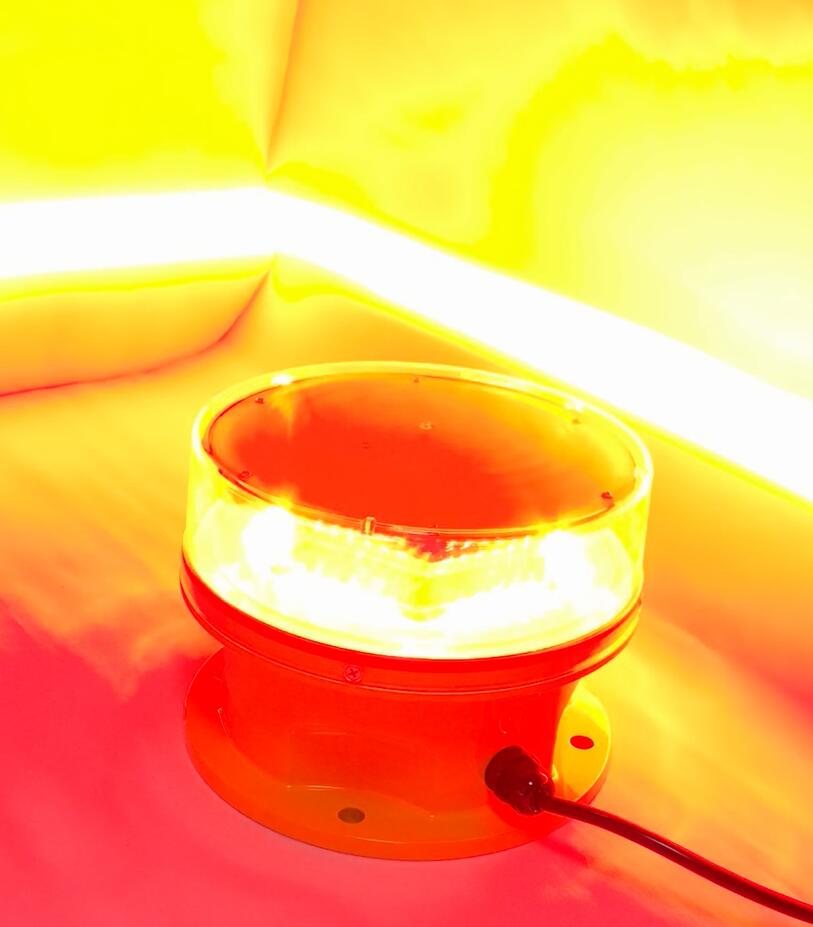Airfield obstruction lights are indispensable components of modern aviation infrastructure, ensuring the safety of aircraft, personnel, and surrounding communities. These lights, strategically positioned on tall structures or along critical pathways, serve as a beacon of safety by marking potential hazards in and around airfields. This article explores the purpose, design, applications, and benefits of airfield obstruction lights, offering insights into their crucial role in aviation safety.
The Purpose of Airfield Obstruction Lights
Airfield obstruction lights are designed to enhance visibility and alert pilots to potential obstructions in the vicinity of an airport or airfield. These lights play a vital role in preventing accidents, especially during low-visibility conditions such as fog, rain, or nighttime operations. By clearly identifying obstacles such as towers, buildings, wind turbines, or antennas, they help pilots navigate safely, reducing the risk of collisions.

In addition to their safety function, airfield obstruction lights contribute to regulatory compliance. International and local aviation authorities, including the International Civil Aviation Organization (ICAO) and the Federal Aviation Administration (FAA), mandate the use of these lights on structures exceeding specific heights or those located near flight paths. Compliance ensures standardization across airfields worldwide, fostering a consistent approach to safety.
Design and Features of Airfield Obstruction Lights
Airfield obstruction lights are meticulously engineered to meet stringent safety and durability standards. Their design typically incorporates the following features:
High Intensity and Visibility
These lights emit bright and steady or flashing signals that are easily visible to pilots from long distances. The intensity and light color (red, white, or dual-color systems) are chosen based on the height of the structure and its proximity to air traffic.
Energy Efficiency
Modern airfield obstruction lights often use LED technology, which offers high energy efficiency, long operational life, and reduced maintenance costs. LEDs also provide consistent brightness over time, ensuring reliable performance.
Durability and Weather Resistance
Given their exposure to harsh environmental conditions, these lights are built to withstand extreme temperatures, wind, rain, and UV radiation. They are typically housed in robust, corrosion-resistant enclosures.
| Airfield obstruction lights | ert4 |
Remote Monitoring and Control
Many advanced systems are equipped with remote monitoring capabilities, allowing airport authorities to check the lights’ status and functionality in real-time. This feature helps in quickly addressing any issues that may arise.
Compliance with Standards
Airfield obstruction lights are manufactured to meet ICAO and FAA standards, ensuring their performance aligns with global aviation safety requirements.
Applications of Airfield Obstruction Lights
The versatility of airfield obstruction lights allows them to be used in various scenarios, including:
Marking Tall Structures
High-rise buildings, communication towers, chimneys, and cranes near airfields require obstruction lights to warn approaching aircraft of their presence.
Guiding Aircraft on the Ground
Lights installed along runways, taxiways, and aprons assist in guiding aircraft during landing, takeoff, and taxiing operations, especially at night or during adverse weather.
Navigational Aids in Remote Locations
In isolated areas with limited ground infrastructure, airfield obstruction lights act as essential navigation aids for pilots.
Emergency and Temporary Airfields
Temporary airfields or those used during emergencies often rely on portable airfield obstruction lights to ensure rapid deployment and operational safety.
The Benefits of Airfield Obstruction Lights
Airfield obstruction lights offer numerous benefits that extend beyond aviation safety. Some of these include:
Enhanced Safety for Pilots and Passengers
By providing clear and reliable visual cues, these lights significantly reduce the likelihood of mid-air collisions or accidents on the ground.
Operational Efficiency
Clear demarcation of obstructions allows for smoother and more efficient flight operations, reducing delays and enhancing overall airfield functionality.
Cost Savings
The adoption of energy-efficient LED lights and remote monitoring systems minimizes maintenance costs and energy consumption.
Environmental Benefits
Modern obstruction lights are designed with eco-friendly materials and technologies, reducing their environmental impact.
Compliance and Risk Mitigation
Adhering to regulatory requirements with properly installed obstruction lights minimizes legal and financial risks for airport authorities and operators.
The Future of Airfield Obstruction Lights
Technological advancements continue to enhance the capabilities of airfield obstruction lights. Innovations such as solar-powered lights, smart sensors, and integration with automated air traffic management systems are paving the way for safer and more efficient airfield operations. Additionally, research into adaptive lighting systems that adjust brightness based on environmental conditions is gaining momentum, further optimizing energy use and visibility.
Conclusion
Airfield obstruction lights are more than just safety devices; they are vital elements that enable the seamless operation of the aviation industry. By marking potential hazards and ensuring visibility, these lights safeguard lives, enhance operational efficiency, and contribute to sustainable aviation practices. As technology advances, the role of airfield obstruction lights will only grow in significance, underscoring their importance in the ever-evolving landscape of air travel.
By prioritizing the installation and maintenance of airfield obstruction lights, stakeholders in the aviation sector can continue to uphold the highest standards of safety and efficiency, ensuring that the skies remain safe for all.